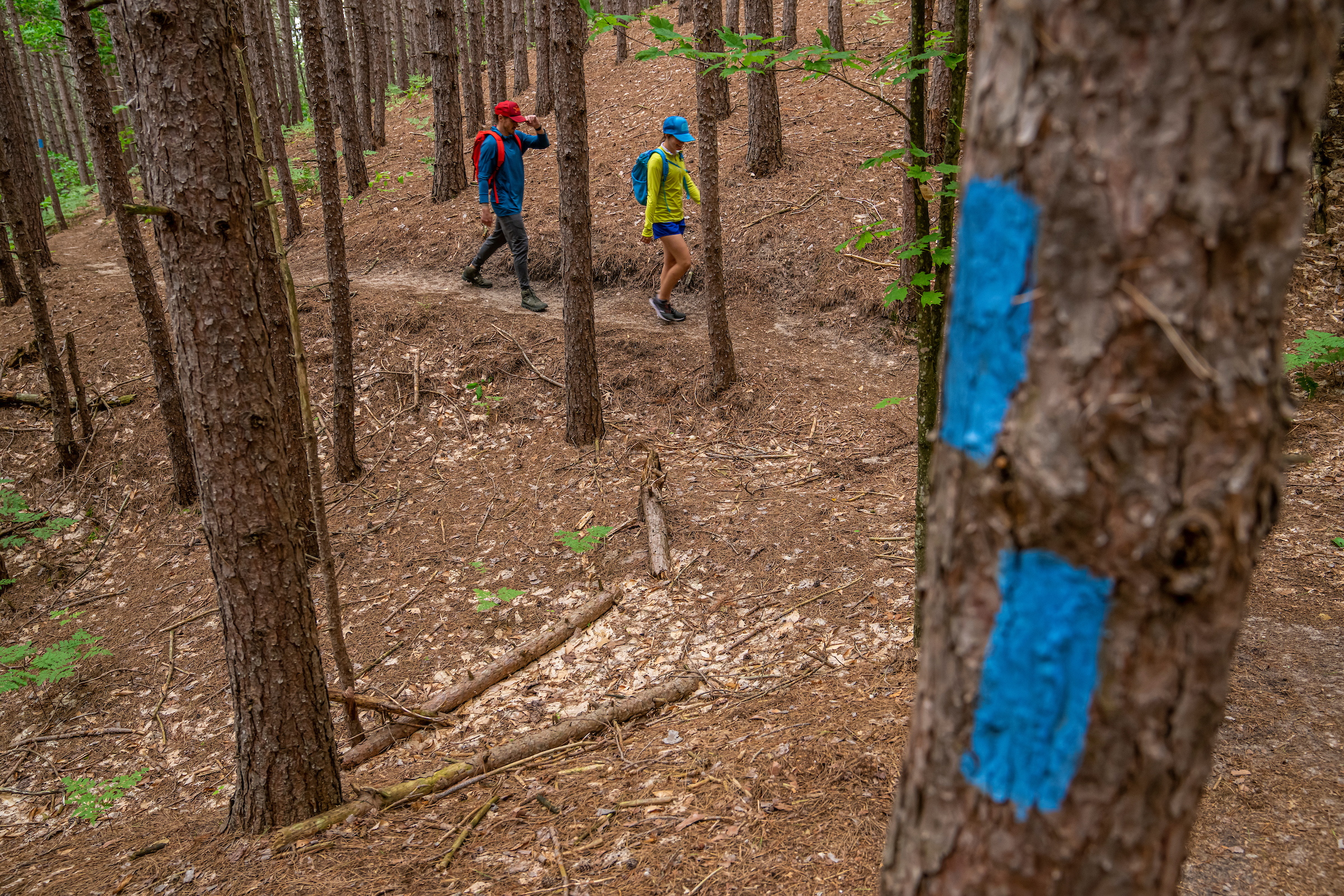Michigan has many monikers – like the Great Lakes State. According to the Department of Natural Resources (DNR), it is also known as The Trails State, with thousands of seasonal routes crisscrossing the state – from hiking and biking to paddling and skiing, and so much more. These various paths are so important to the state’s image that a designated Michigan Trails Week is even held every fall, this year September 17-24.
The scenic trails throughout the Petoskey area provide a wealth of recreational opportunities for locals and visitors, while also offering unique historical perspectives – a trip back in time as it were. As you venture along these various routes, be on the lookout for markers, museums, and other remnants of days gone by, which are sure to enhance (and educate) your experience.
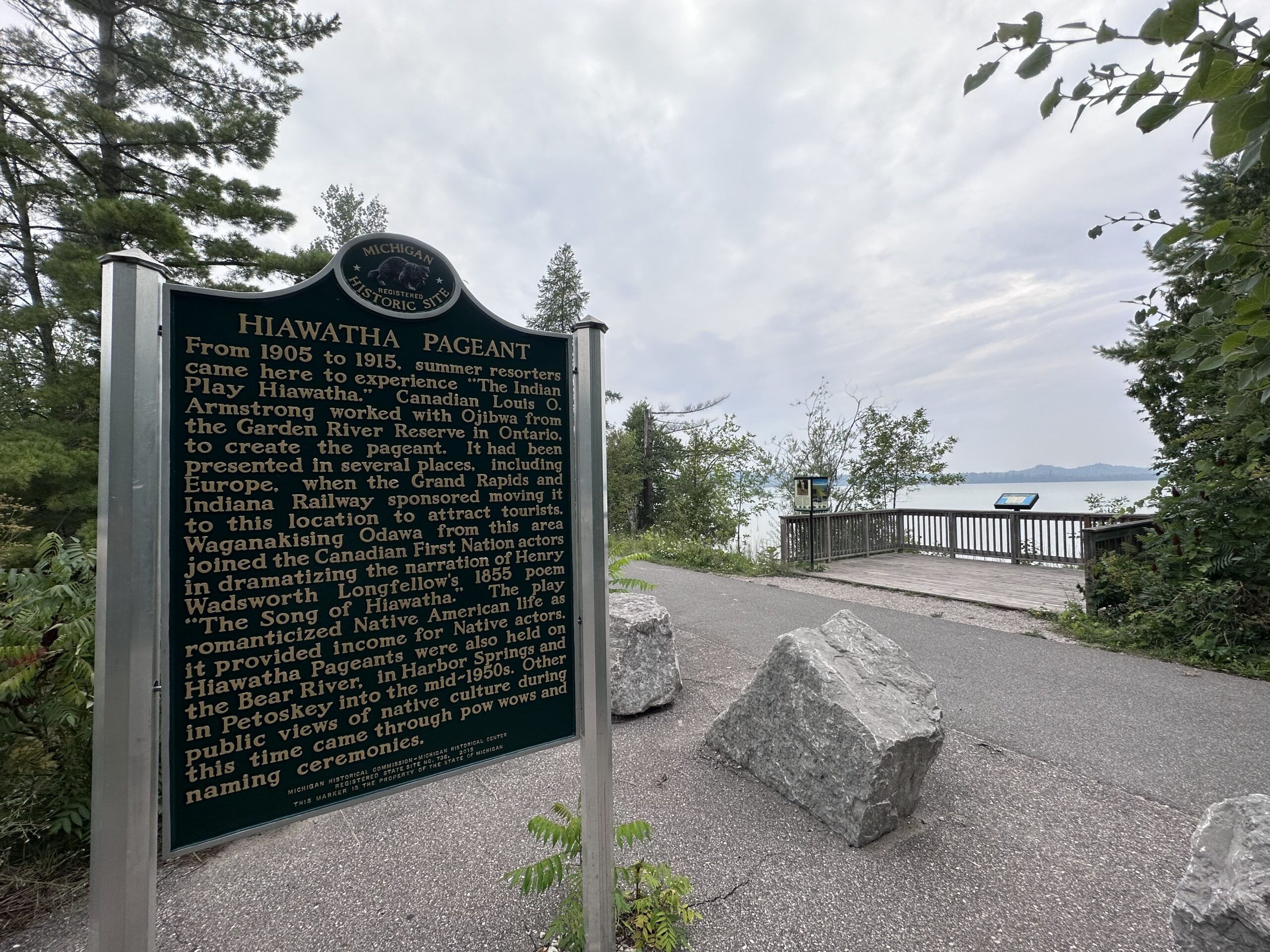
Photo credit: Dianna Stampfler
NORTH COUNTRY TRAIL
Traversing for 4,800 miles through eight states from Vermont to North Dakota – with Michigan boasting the largest section at 1,150 miles – the North Country Trail was authorized and added to the National Trails System in 1980. Often overlapping with other scenic routes, the NCT is easily identified by the blue blazes (markers) along the way.
Two groups work to maintain the trail in northwest Michigan, while also hosting regular public hikes along various sections of their respective routes. The NCT Jordan Valley 45° Chapter monitors the section of the trail which enters from Kalkaska County to the south and travels through the eastern part of Charlevoix County into Petoskey and up to Kipp Road, while the Harbor Springs Chapter looks after the part from Kipp Road north toward Wilderness State Park, the Headlands International Dark Sky Park and the Straits of Mackinac.
In all, 126 miles can be found within the Petoskey region. The terrain is typically flat, although there are some hills and valleys which travel through hardwood forests, pine plantations, cedar swamps, country meadows, farmland, and picturesque rural landscapes. The NCT also passes the River Road Sports Complex, North Central Michigan College and its Natural Area, then along the Bear River and the shoreline of Little Traverse Bay in downtown Petoskey (an official NCT Trail Town), and adjacent to the historic Bay View Association before heading north out of town along Hiawatha Trail toward Round Lake.
A Michigan State Historic Marker was unveiled at a site near Round Lake in October 2015 to commemorate the Hiawatha Pageant which was performed here from 1905 to 1915. Produced by the Grand Rapid and Indiana Railway, the popular attraction featured two daily performances (in the summer) by local Native Americans dramatizing Henry Wadsworth Longfellow’s poem “The Song of the Hiawatha.” The grandstand, which could seat about 2,500 spectators brought in by train, featured a gift shop where local handicraft souvenirs were sold.
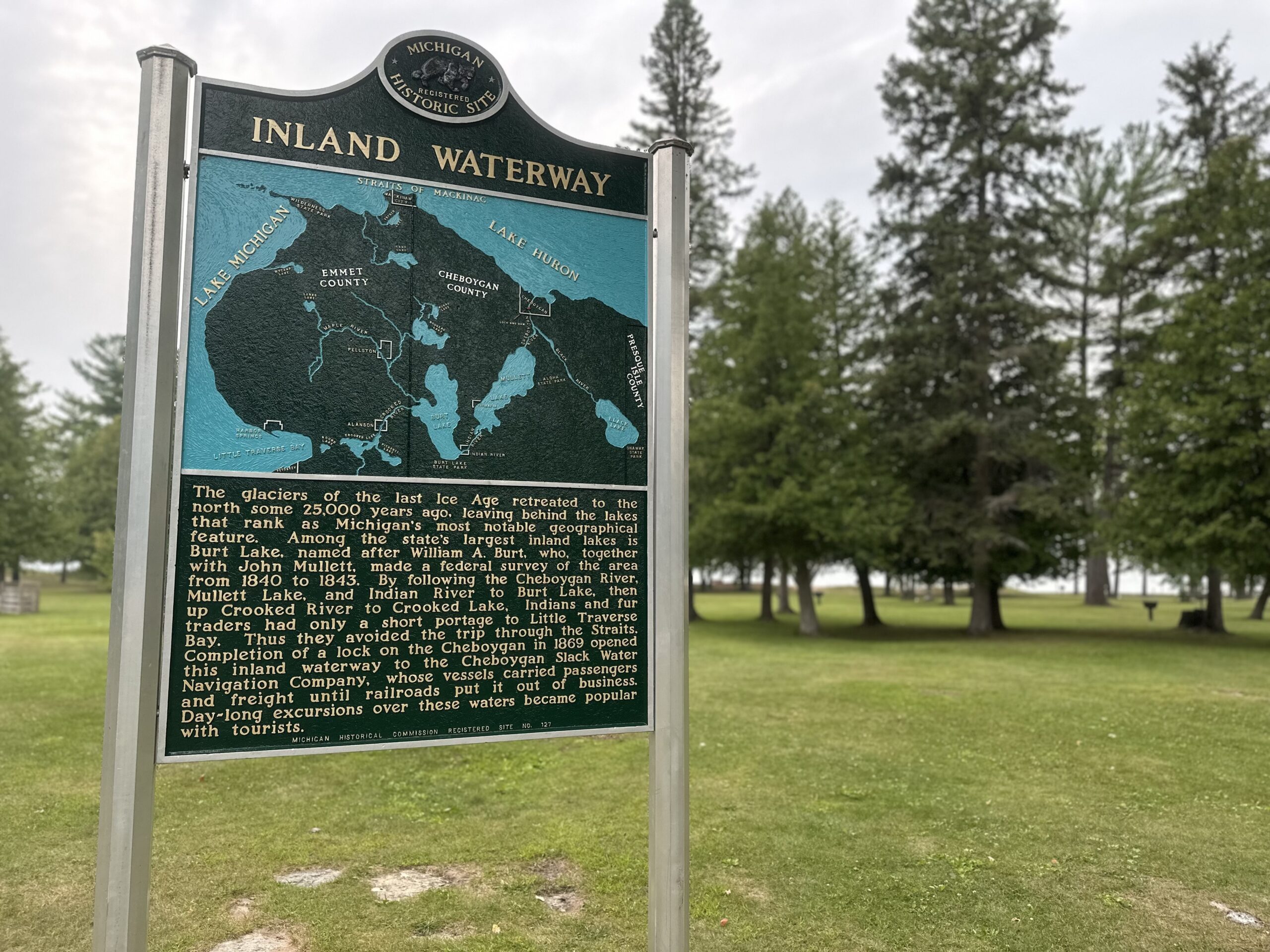
Photo credit: Dianna Stampfler
INLAND WATERWAY
Long before northern Michigan became a tourist mecca, Native Americans avoided the often-treacherous waters in the Straits of Mackinac by paddling, a series of connecting lakes and rivers today known as the Inland Waterway – the largest such route in the state. More than 50 encampments have been unearthed along this route, including one in Ponshewaing on the north side of Crooked Lake with artifacts dating back over 3,000 years.
This 38-mile water route spans Emmet and Cheboygan counties (including the communities of Conway, Oden, Ponshewaing, Alanson, Indian River, Topinabee, and Cheboygan) and consists of Crooked Lake, Crooked River, Burt Lake, Indian River, Mullet Lake, and Cheboygan River, before emptying into Lake Huron. With a maintained depth of five feet, the waterway boasts two seasonal locks – one in Cheboygan and one in Alanson, which is also home to the “World’s Shortest Swing bridge” originally built in 1901. Each Labor Day, this town hosts its annual bridge walk led by the Rivertown Jazz Band and includes other community activities in Memorial Park. It should be noted that US-31 is under construction in downtown Alanson, so visitors should plan for detours and delays.
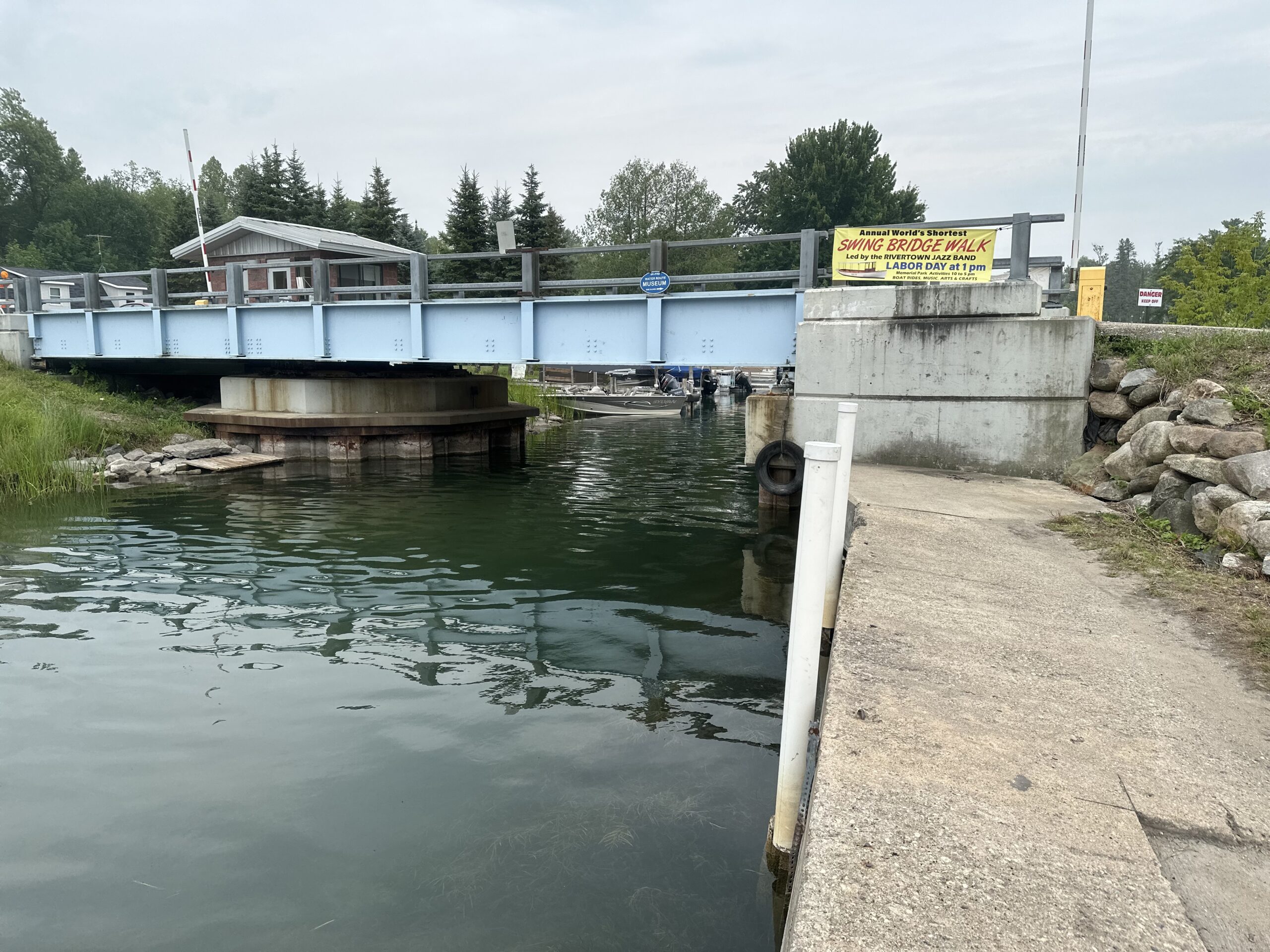
Alanson swing bridge located on the Crooked River. Photo credit: Dianna Stampfler
Open to both motorized and non-motorized boaters, the Inland Waterway invites a leisurely river experience past quaint homes, historic businesses, and beautiful natural areas where swans, geese, and loons are often seen. The lakes are large enough for water skiing, tubing, wakeboarding, and jet skiing, with several beach areas as well.
In 1957, the State of Michigan erected the Inland Waterway Historic Marker at Burt Lake State Park (follow the signs to the beach area) in Indian River (Tuscarora Township, Cheboygan County) to recognize the importance of this route to early commerce including fur traders, freight service, and day-long passenger excursions. The Inland Water Route Historical Society was formed in 2004 to research and document the history of this route, operating a museum on River Street just one block east of US-31 in downtown Alanson (near the swing bridge).
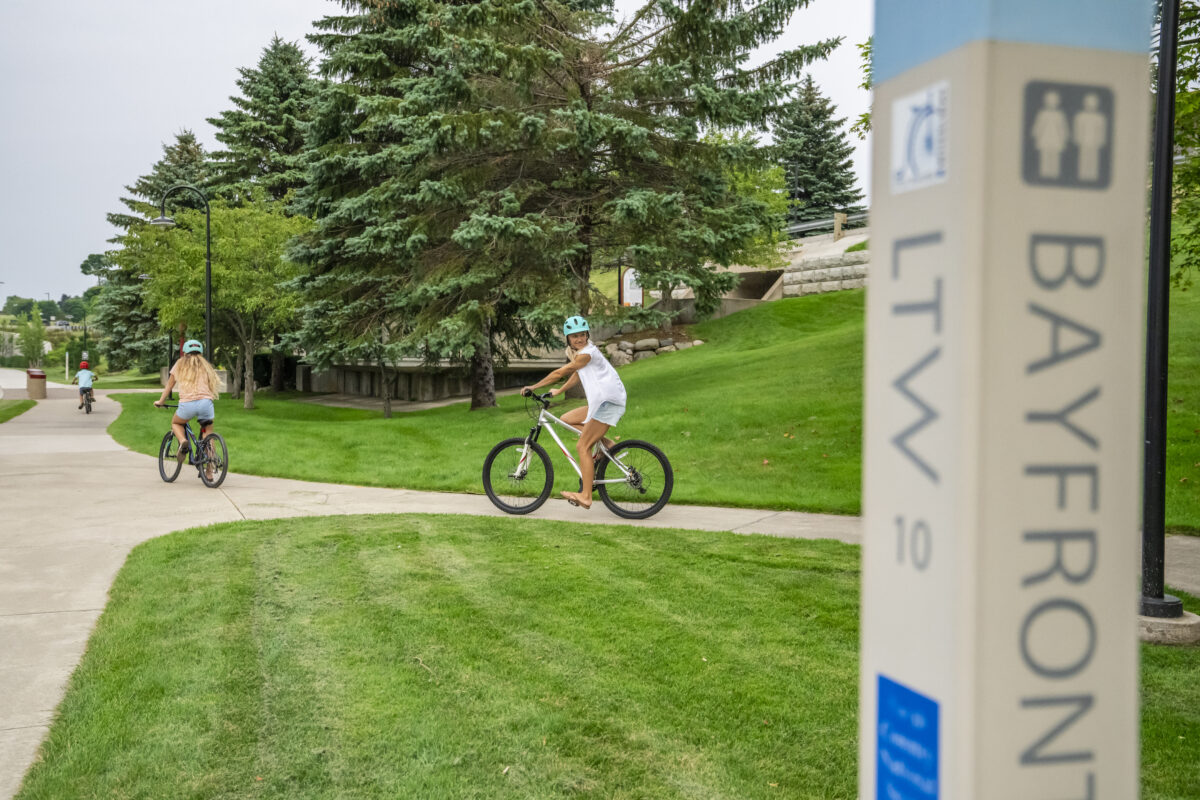
Family bike ride along the waterfront of Petoskey, Michigan.
LITTLE TRAVERSE WHEELWAY
Portions of the 26-mile Little Traverse Wheelway* skirt the freshwater coastline of Lake Michigan, making it one of the most scenic paved routes in the Midwest. Stretching between Waller Road north of Charlevoix to Kosequat Park near Wequetonsing Golf Club in Harbor Springs, the non-motorized trail is open to cyclists, inline skaters, walkers, and joggers.
According to the Top of Michigan Trails Council, the section between Petoskey’s Bayfront Park to Petoskey State Park follows the original Little Traverse Wheelway, which dates back to the 1880s. It also overlaps a section of the North Country Trail and is part of the larger 500-mile U.S. Bicycle Route 35, which runs from Indiana through Michigan to Sault Ste. Marie, Canada.
This winding path passes through wetlands, alongside rocky shoreline – where coveted Petoskey Stones can be found, through the Bay Harbor community, and past several historic sites like the St. Francis Solanus Indian Mission on Lake Street in downtown Petoskey. Built at the request of Bishop Frederic Baraga (the Snowshoe Priest) as the city’s first Catholic church in 1859, it is the oldest building in Petoskey, one of the oldest in the northern lower peninsula, and is the only existing building in the L’Arbre Croche district. Tours of this state and national historic site are offered on Sundays (12-3pm), May through October. Please be respectful of the small cemetery, which is a burial ground for local Odawa Indians.
Another noted historic site along the Wheelway is the former Chicago & West Michigan Railway Station – also known as the Chesapeake & Ohio Railway Station – which today houses the Little Traverse History Museum. Among the exhibits and collections are items dedicated to Nobel and Pulitzer Prize-winning author Ernest Hemingway, who spent the first 22 summers of his life in nearby Walloon Lake and the surrounding area. The museum is one of nearly 20 regional sites on a self-guided Michigan Hemingway Tour created by the Michigan Hemingway Society.
*NOTE: Due to erosion, a 1.25-mile portion of the Little Traverse Wheelway atop a 120-foot bluff is currently closed.
For trail maps of the Petoskey area, visit upnorthtrails.org, michigantrailmaps.com, and wmtrails.org.
 About the Author: Dianna Stampfler is the president of Promote Michigan and the author of the best-selling books “Michigan’s Haunted Lighthouses” and “Death & Lighthouses on the Great Lakes.” She loves traveling around the Great Lakes state, with Hemingway country being among her favorite destinations.
About the Author: Dianna Stampfler is the president of Promote Michigan and the author of the best-selling books “Michigan’s Haunted Lighthouses” and “Death & Lighthouses on the Great Lakes.” She loves traveling around the Great Lakes state, with Hemingway country being among her favorite destinations.

